Abstract
OBJECTIVE: The authors analyzed data from the 1991 National Planning Survey to (a) assess respondents' awareness of three official sources of information about HIV/AIDS (CDC, the Surgeon General, and state health departments); (b) assess respondents' perceptions of the reliability of these sources; and (c) compare respondents' personal beliefs about HIV transmission with their beliefs regarding the experts' view. METHODS: The authors conducted a secondary analysis of the responses of the 1622 survey participants who gave complete information. RESULTS: People with more years of formal education were more likely to have heard of the CDC and the Surgeon General. The CDC was given the highest overall reliability rating, followed by the Surgeon General and then state health departments. Transmission of HIV/AIDS by various modes of casual contact was perceived more likely among those who gave the CDC lower reliability ratings. However, regardless of their perceptions of the reliability of the CDC as a source of HIV/AIDS information, many respondents believed the probability of transmission by casual contact more likely than they believed experts said it was. CONCLUSIONS: The discrepancy found between what people believe about health risks and what they think experts believe has important implications for the design of effective health information campaigns and for the design of questionnaire items that aim to assess people's "knowledge" and "attitudes" regarding sensitive health topics.
Full text
PDF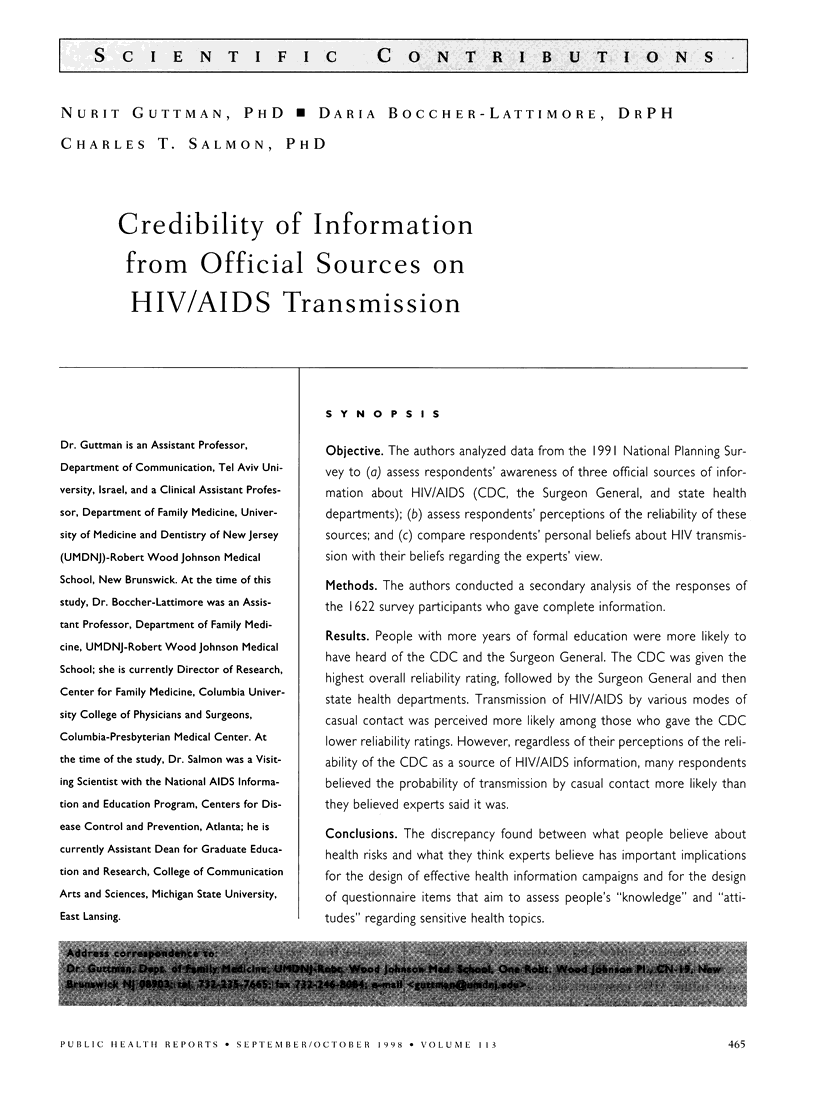
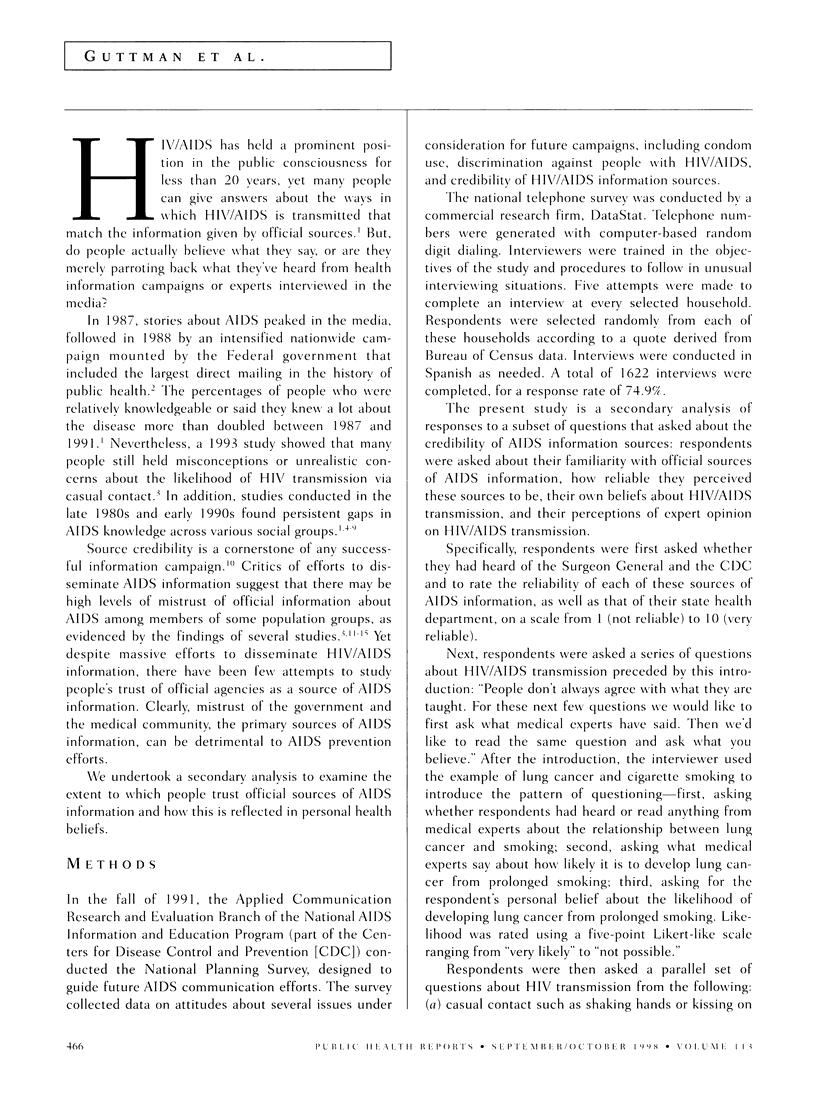
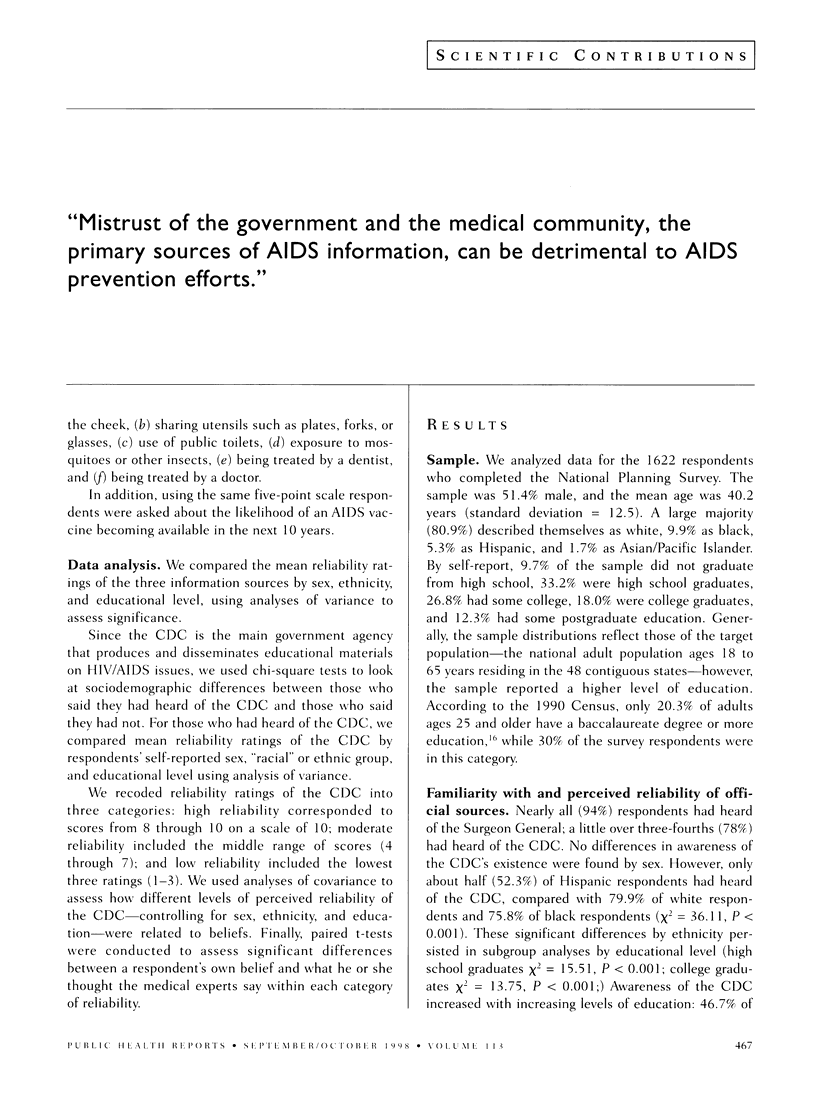
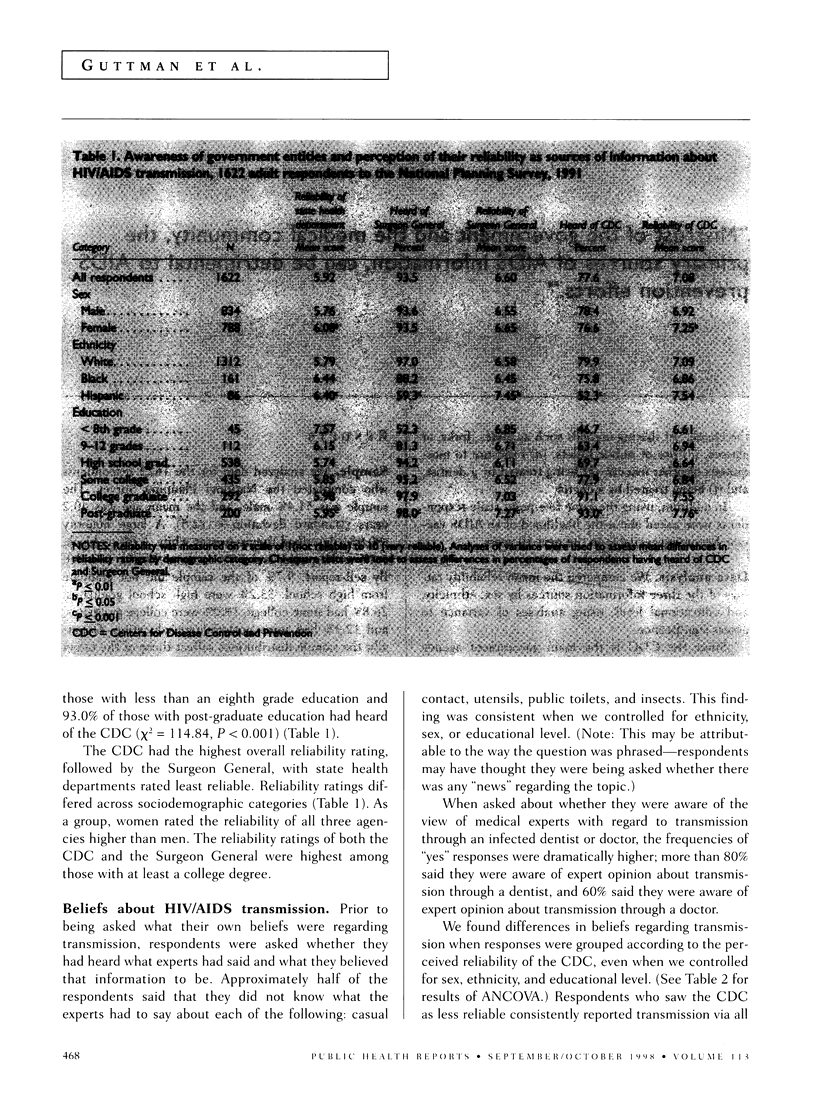

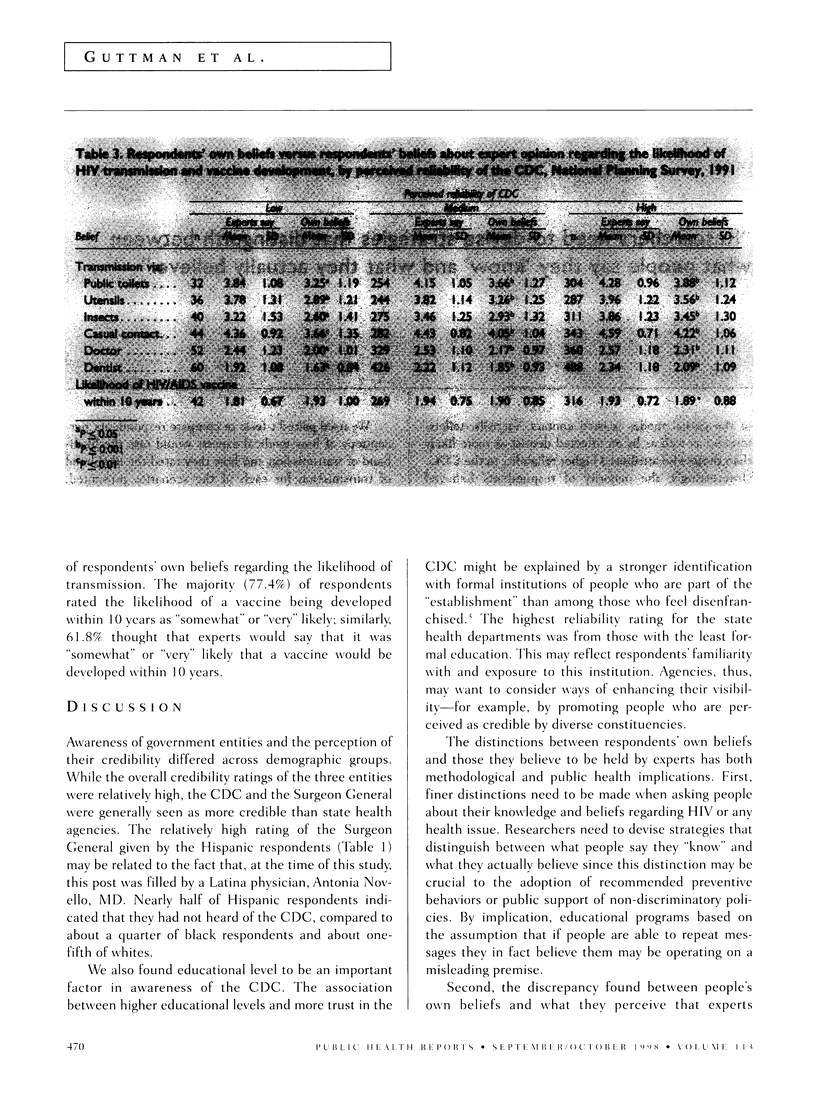

Selected References
These references are in PubMed. This may not be the complete list of references from this article.
- Aruffo J. F., Coverdale J. H., Vallbona C. AIDS knowledge in low-income and minority populations. Public Health Rep. 1991 Mar-Apr;106(2):115–119. [PMC free article] [PubMed] [Google Scholar]
- Barr J. K., Waring J. M., Warshaw L. J. Knowledge and attitudes about AIDS among corporate and public service employees. Am J Public Health. 1992 Feb;82(2):225–228. doi: 10.2105/ajph.82.2.225. [DOI] [PMC free article] [PubMed] [Google Scholar]
- Dusenbury L., Diaz T., Epstein J. A., Botvin G. J., Caton M. Attitudes toward AIDS and AIDS education among multi-ethnic parents of school-aged children in New York City. AIDS Educ Prev. 1994 Jun;6(3):237–248. [PubMed] [Google Scholar]
- Freudenberg N. AIDS prevention in the United States: lessons from the first decade. Int J Health Serv. 1990;20(4):589–599. doi: 10.2190/W70D-28M1-C62K-K60R. [DOI] [PubMed] [Google Scholar]
- Herek G. M., Capitanio J. P. Public reactions to AIDS in the United States: a second decade of stigma. Am J Public Health. 1993 Apr;83(4):574–577. doi: 10.2105/ajph.83.4.574. [DOI] [PMC free article] [PubMed] [Google Scholar]
- McCaig L. F., Hardy A. M., Winn D. M. Knowledge about AIDS and HIV in the US adult population: influence of the local incidence of AIDS. Am J Public Health. 1991 Dec;81(12):1591–1595. doi: 10.2105/ajph.81.12.1591. [DOI] [PMC free article] [PubMed] [Google Scholar]
- Price V., Hsu M. L. Public opinion about AIDS policies. The role of misinformation and attitudes toward homosexuals. Public Opin Q. 1992 Spring;56(1):29–52. doi: 10.1086/269294. [DOI] [PubMed] [Google Scholar]
- Rogers T. F., Singer E., Imperio J. The polls: poll trends. AIDS--an update. Public Opin Q. 1993 Spring;57(1):92–114. doi: 10.1086/269357. [DOI] [PubMed] [Google Scholar]
- Salmon C. T., Wooten K., Gentry E., Cole G. E., Kroger F. AIDS knowledge gaps: results from the first decade of the epidemic and implications for future public information efforts. J Health Commun. 1996 Apr-Jun;1(2):141–155. doi: 10.1080/108107396128112. [DOI] [PubMed] [Google Scholar]
- Singer E., Rogers T. F., Glassman M. B. Public opinion about AIDS before and after the 1988 U.S. government public information campaign. Public Opin Q. 1991 Summer;55(2):161–179. doi: 10.1086/269250. [DOI] [PubMed] [Google Scholar]
- Slovic P. Perception of risk. Science. 1987 Apr 17;236(4799):280–285. doi: 10.1126/science.3563507. [DOI] [PubMed] [Google Scholar]
- Thomas S. B., Quinn S. C. The Tuskegee Syphilis Study, 1932 to 1972: implications for HIV education and AIDS risk education programs in the black community. Am J Public Health. 1991 Nov;81(11):1498–1505. doi: 10.2105/ajph.81.11.1498. [DOI] [PMC free article] [PubMed] [Google Scholar]


